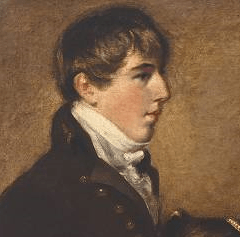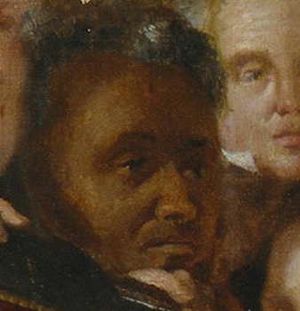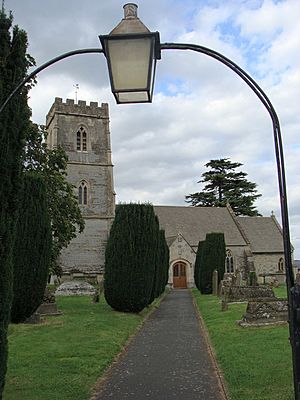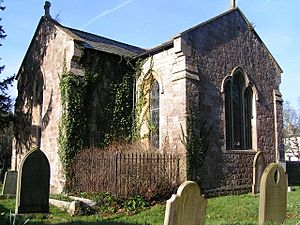George Wilson Bridges facts for kids

Reverend George Wilson Bridges (1788–1863) was an interesting person who was a writer, a photographer, and an Anglican priest. He lived an adventurous life, traveling widely and even becoming one of the first people to take photographs in many parts of the world.
After marrying his wife in a way that caused a family disagreement, he worked as a priest in Jamaica. He was the Rector for the parish of St Dorothy until late 1817. Then he moved to Manchester from 1817 to 1823. After that, he became the rector at the nearby parish of St Ann from 1823 to 1837.
Bridges wrote books, and one of them caused his London publisher to be found guilty of libel. This happened because of what he wrote about Louis Celeste Lecesne and John Escoffery. After his wife left him, a very sad boating accident happened where he lost four of their daughters.
Later, Bridges went to Canada. He then returned to England and met William Fox Talbot, who was a pioneer in photography. Bridges became very interested in photography himself. He traveled around the Mediterranean Sea, taking about 1,700 early pictures. These included photos of Egypt, Greece, the Holy Land, and even Mount Etna erupting. His last church job was in Gloucestershire, England.
Contents
Early Life and Family
George Wilson Bridges was born in 1788. His father, George, was a banker and merchant. A famous painter named John Constable painted a portrait of George as a young man. Constable admired George's sister, so he painted the whole family of eight children at their home, Lawford Place.
George was expected to follow in his father's footsteps, but he chose to become a priest. He trained for this role and was meant to be the vicar at Bruntingthorpe in Leicestershire. His first job as a priest was at St Andrew's Church, Frenze in Norfolk. He married Elizabeth Raby Brooks in a way that caused a family split, which made for a difficult start to their marriage.
In 1814, Bridges took a trip around Europe. He wrote about his travels, and his account was published. While he was still a student at Trinity College, Oxford, he visited countries like France, Holland, Flanders, Germany, and Switzerland.
Life in Jamaica
Bridges moved to Jamaica in 1816 after being invited by the Governor of Jamaica. He was said to be paid very well there. For most of 1817, he was the Rector of St Dorothy. From late November 1817, he became the rector of St Mark's church in Mandeville. Here, he was in charge of the Jamaican parish of Manchester from 1817 to 1823.
Mandeville was a new town, and its church was built in 1816. The very first official building they constructed was the rector's house. Bridges, with the approval of the local church committee, rented out this house as a tavern. He was allowed to keep a large part of the annual rent.
In 1823, Bridges became responsible for the nearby parish of St Ann. When he first arrived in Jamaica, he had no money. But by 1823, he was earning over £1000 a year. About £400 of this was his salary. Most of his income came from fees he charged for performing funerals, marriages, and baptisms. He performed many baptisms for money he received from enslaved people. He remained the rector of St Ann until 1837.

While in Jamaica, Bridges' writings caused some problems. One of his books, Annals, Volume 2, led to a legal case in England. His publisher had to remove the second volume of the book. With the publisher's help, the book was changed and reissued. This was not the only time Bridges' actions would be discussed far away in London.
Bridges spoke out against the ending of slavery. He also disagreed with Methodist missionaries. There was even a parliamentary inquiry in Britain about a punishment Bridges gave to an enslaved person. This person was punished for attending a Methodist meeting. In 1830, the case was brought up in the British House of Commons. It was reported that a girl had been hit by Bridges and then punished further by two men under his instruction. The punishment was for not following an order. She had complained, but a local committee decided not to take further action.
Bridges later started a group that tried to remove the missionaries from Jamaica.
In 1834, Bridges' wife left him. She took their son, Henry, with her and went to Britain. Bridges was left in Jamaica with four of their children. At this time, they had six children in total, with the youngest already in England. After some months, Bridges returned to England to find his wife and his missing son and daughter. He did not go back to Jamaica for over a year. During this time, he spent some time with Somerset Lowry-Corry, 2nd Earl Belmore, who was a former governor of Jamaica. In February 1836, he received money as compensation when slavery was abolished in the British Empire. In 1837, he met Joseph Sturge, a leading British abolitionist. It was noted that there was no bad feeling between them, even though Bridges had previously opposed abolition.
Time in Canada
In 1837, Bridges and his separated wife faced a terrible event. A boating accident in St Ann's Bay, Jamaica, resulted in the loss of all four of their daughters. Their son was saved, which was a small comfort. Bridges and his son left England and Jamaica and went to Canada. They lived there for several years, and they had an octagonal house built at Lake Rice. In 1842, Bridges' son, William, became ill, so they returned to England.
Photography and William Fox Talbot
Bridges took a new job as the rector of St Giles Church in Maisemore in Gloucestershire, England. His son William attended school there. Through a friend of William's, Bridges became familiar with the Talbot family. He admired one of William Fox Talbot's publications. This was the first book ever printed with photographs, made possible by Fox Talbot's invention of the calotype.
Bridges became very interested in the calotype process, which was an early form of photography. He convinced Talbot to provide him with special photographic paper for a big project. Talbot even allowed Bridges to be taught how to use the process, even though the American patent for it was still some years away.
In 1846, Bridges lent his wooden house in Rice Lake, Ontario, called Wolf Tower, to Catharine Parr Traill. He likely didn't need the house because for the next seven years, he traveled through Europe and North Africa, taking photographs using the new calotype technique.
In 1847, records show that the Jamaican government would give 30 pounds annually to a Mr. Stewart to help care for the young son of Reverend George Wilson Bridges. The reason for this is not explained. However, the government also gave Bridges himself 60 pounds per year for his 25 years of service and because he left due to a "calamitous situation." This money must have helped Bridges during his travels.
Bridges' first stop was Paris, France. There, he had a very advanced camera made for him by an optician named Charles Chevalier. In Paris, he also met Richard Haight, an American, who used his camera to take pictures in England.
In Malta, Bridges met another priest, Rev. Calvert R. Jones. He also met Christopher Rice Mansel Talbot, who was a cousin of William Fox Talbot and an entrepreneur. Christopher was touring the Mediterranean in his yacht, Galatea. Both Calvert Jones and Christopher Talbot had been asked by Fox Talbot to help Bridges. This help wasn't entirely selfless, as Bridges was sending one copy of each photograph back to Fox Talbot so he could develop the pictures. In return, Bridges received more prepared paper.
In 1851, Bridges was in Egypt. During his travels, he also visited Italy, Sicily, Greece, Turkey, the Holy Land, and other parts of North Africa. Some of the earliest successful photographs taken in these countries were by Bridges. The original negatives from these pictures can be worth a lot of money today.
Later Life and Works
In 1852, Bridges became secretary to the Bishop of Bristol, James Henry Monk. Bishop Monk later gave him a position at the village and ferry port of Beachley. For forty pounds each year, Bridges took care of the Gloucestershire parish and St John's church.
Bridges published several books based on the 1,700 photographic negatives he had collected. He had tried to sell many of them while in Malta, but he didn't make much profit.
When his wife, Elizabeth, who he had been separated from, died in 1862, he published a book called Outlines and Notes of Twenty-Nine Years. The "29 years" refers to the time from when they separated until her death.
George Wilson Bridges died on September 20, 1863, while still serving at Beachley parish.
Published Works
- Alpine Sketches, comprised in a short tour through parts of Holland..., 1814
- A Voice from Jamaica; in reply to William Wilberforce, London, 1823
- Dreams of Dulocracy: or, The puritanical obituary, 1824
- The Driving System, 1824
- The Annals of Jamaica, Volume 2, 1828
- Outlines and Notes of Twenty-Nine Years
- Palestine As It Is: in a series of photographic views, 1858





